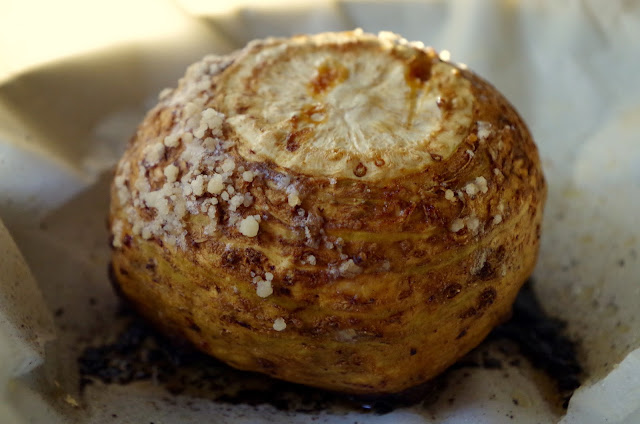Baechu (Napa Cabbage) Kimchi
Friends, there are so many kinds of kimchi, it's almost overwhelming.
Here are just a few: 10 different kinds of kimchi and 7 more kinds. And, people, that's just the tip of the cabbage--there are about 200 more kinds (at least according to Lucky Peach).
It should come as so surprise that I have never turned from any banchan (those delectable little side dishes served at Korean restaurants)--fermented, salted, fresh, fried, or otherwise. Given my proclivities for morsels and sauces, you can imagine that banchan is my favorite part of a Korean meal. And kimchi is always well represented--in its many forms--among banchan.
And in my attempts to be a better educated kimchi eater, I can pass on this much about kimchi (with some internet searching):
- This is an old food in Korea, and probably came about because 1.) winters are mighty cold on the Korean peninsula (some of the coldest in the world at its latitude) and 2.) preserving salted foods in a land with few fertile plains was a matter of survival not just taste buds;
- Historians believe that the Chinese developed a similar food preservation in about 50 BCE, and Koreans quickly adopted the method, but others will argue an even longer history for Korea's national dish;
- You can make it with cabbage and radishes, but also cucumbers, mustard leaves (gat), and a whole host of other veggies;
- There is a great debate about what can be called kimchi, especially as more Japanese people embrace this Korean dish. Some Koreans find that the Japanese kimchi comes no where close to Korean kimchi, and as such should not be called "kimchi."
Here's what else I know: kimchi makes a fantastic banchan, yes. But you're missing out if you don't also add it to fried rice or spread on a quesedilla (a revelation from the Hawaiian-Korean fusion restaurant Marination in Seattle). Add it to scrambled eggs. Or layer it onto a grilled cheese. Or, people, add it to some soy-sauce-marinated beef in a soft taco with scallions (heavenly).
But don't hesitate to just stick the fork (or chopsticks) in the jar and go for it, all on its kimchi own.
Baechu (Napa Cabbage) Kimchi
Adapted from Agricola Cookbook by way of Food in JarsYield
6 1-pint jars
Ingredients
1 large head of napa cabbage (3-4 pounds), cut into 2-inch chunks
1/3 cup kosher salt
1 pound daikon radish, julienned
1 bundle green onions, trimmed and cut into 2-inch lengths
8-9 cloves garlic, peeled
3 inches fresh ginger, peeled
4-7 tablespoons gochugaru
Instructions
1. Place the chopped cabbage in a large bowl and add salt. Cut the cabbage in half lengthwise, then crosswise into 2-inch pieces, discarding the root end. Place in a large bowl, sprinkle with the salt, and toss with your hands until the cabbage is coated. Add enough cold water to just cover, making sure the cabbage is submerged. Place a plate on top of the cabbage and top the plate with a heavy weight (I used a jar of kombucha I am brewing, I admit (see below)). Let sit for 3-4 hours or even overnight.
2. Drain the cabbage and return the cabbage to the bowl and add the prepared daikon and green onion.
3. In a small food processor or blender, combine the garlic cloves, ginger, and sugar. Chop until a paste forms. Add it to the bowl with the vegetables.
4. Add the gochugaru. For a batch this size, I like to use 5-6 tablespoons. That makes a mildly spicy batch. If you're very sensitive to heat, use less. If you want something a little more zippy, add more.
5. Use your hands to work the spices into the vegetables. Pack it all into a half gallon jar or small crock. Weigh it down with a 4 ounce jar or pickling weights and cover the vessel with an airlock or kitchen cloth (the airlock helps keep the fragrance confined).
6. Let the kimchi ferment for six to seven days, until you like how it tastes. (I am going to admit, I am on week three, and I am still letting it ferment; just keep tasting it until you like it, which means you get a little kimchi everyday.)
7. When the kimchi is done, portion it into jars and refrigerate.
 |
| Weighting the cabbage in a cold water brine with a jar of kombucha. One fermentation aids another. |











Comments
Post a Comment